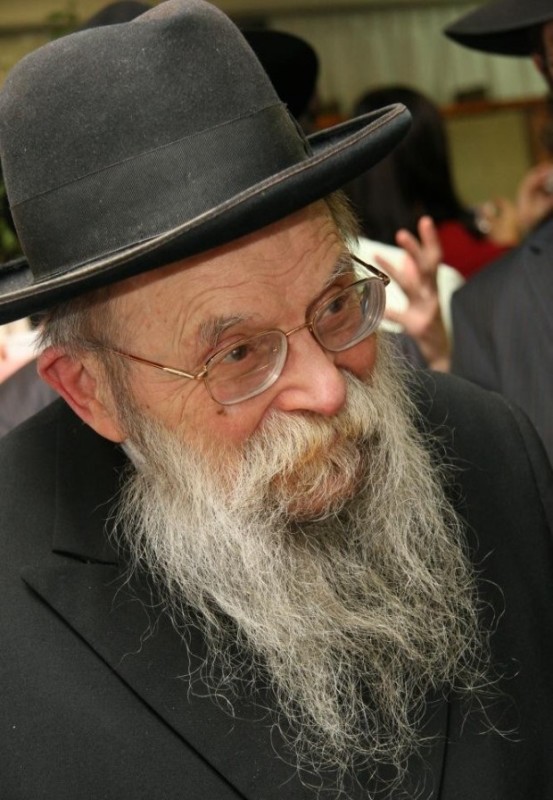This was a question that I sent through to Kollel Eretz Chemda . Below is the response they sent me. It can also be found posted on their website . In short (the way I understand it), no afros but anything less than that is probably ok. 
Question: I have heard that there is an issue with long hair being a chatzitza (problematic separation) with regard to tefillin shel rosh. What is the halachic cut off point?
Answer: Some poskim say that long hair is a chatzitza for tefillin. However, regarding most cases of long hair, these opinions are difficult, and the length is not the main issue, as we will see.
One puts the tefillin shel rosh where the hair grows (Shulchan Aruch, Orach Chayim 27:9). As one is not required to shave his head frequently, hair could not possibly be a chatzitza regarding tefillin. Why not? The gemara (Zevachim 19a) discusses whether hair from the head that hangs down between the kohen’s clothes and his body is a chatzitza and does not resolve the question. On this backdrop, the Machatzit Hashekel (27:4, cited by the Mishna Berura 27:15) says that a blorit (probably, a clump of hair in the front of the head) is a chatzitza for tefillin. He says that, for a blorit, one cannot apply the rule that anything that exists normally (r’vitayhu) is not a chatzitza because it is “abnormally big.” Presumably, if the hair whose roots are in the tefillin’s location are combed down neatly to one’s waist, it would not be a problem because the part of the hair that the tefillin is on is the same as it would be if he cut the long part. The problem would be only if at the point where the tefillin sit there was noticeably more hair than expected. If one wanted to be strict, a relatively conservative side part could be more of a problem than long hair with a middle part (see the Aruch Hashulchan, OC 27:14). We have not heard people being careful about the former.
Igrot Moshe (OC IV, 40.18) goes further, saying that transplanted hair is not a chatzitza, since it cannot be removed from the head without cutting (unlike a toupee) and the person wants it to be there. Rav O. Yosef (Yechave Da’at II, 2) points out that mourners have to grow their hair at least for thirty days and some do so for twelve months, yet the poskim do not warn about tefillin. He also points out that there is a double doubt pointing that hair is not a problem of chatzitza, as the Rashba (Shut III, 282) also suggests that chatzitza is a problem for tefillin shel yad but not shel rosh.
There are two areas in which some poskim’s concerns raise serious questions of chatzitza specifically for people who, by our standards, have long hair. One is that on the sides of the head where the straps of the shel rosh hold down the tefillin, there could be several layers of hair, much of which would not be there at all if his hair was of normal length. Be aware that, on one hand, the Rama (OC 27:4) says that chatzitza applies only to the boxes of the tefillin, not the straps. On the other hand, the Mishna Berura (27:16) says in the name of “the Acharonim” that one should not be lenient in regard to the part of the straps that are used to fasten the tefillin to the body. Another issue is raised by the Mishna Berura (27:15). He says that, in addition to problems of chatzitza, a lot of hair can prevent the tefillin from being secured in the right place. Apparently, he means that the tefillin are supposed to be on the head, which may be accomplished even if there is hair in between. It is not supposed to be sitting on a clump of hair, which happens to be supported by the head (see Shulchan Aruch ibid.:5 who distinguishes between a thick and a thin hat). Sometimes, especially regarding those with curly long hair, the tefillin don’t seem to be resting on the head to any significant degree.
In summary, in all but the most extreme cases presented above, there is ample reason to say that long hair does not prevent the fulfillment of the mitzva of tefillin. We would note that many of the poskim who raised the issue combat the phenomenon of long hair for males (primarily?) based on other halachic, social, and philosophical elements (see Bemareh Habazak V, 25).
For additional sources and reference material see the links on this site .


 "Haredim want secular higher education, but are hampered by a lack of basic math and English skills, according to a new study.
"Haredim want secular higher education, but are hampered by a lack of basic math and English skills, according to a new study.